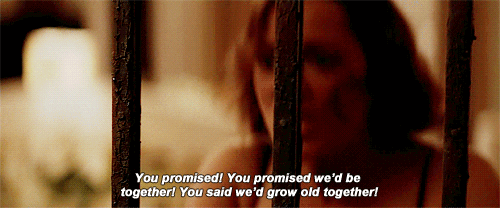- Please Consume
- Posts
- From Writer to Director
From Writer to Director
We will be transitioning from one visually stunning auteurist work, where an all-knowing robot makes an outsider feel loved, to another. But this one features Oscar Isaac performing a choreographed dance to Oliver Cheatham's "Get Down Saturday Night."

Good morning Consumers. This is please consume, the film newsletter that loves you more than Christopher Nolan loves dead wives.

This is what we’ve got for today 👇️
Tyler gives us his take on A.I in film.
Trailer Tuesday!
All the latest news and notes.
Let’s get rolling…



Now that The Creator is bursting onto the scene bringing with it a discussion of AI in movies we decided to take that idea and run with it. So this week we’ll be discussing movies about artificial intelligence.
Ex Machina (2014)

Written by Tyler Clark
We will be transitioning from one visually stunning auteurist work, where an all-knowing robot makes an outsider feel loved, to another. But this one features Oscar Isaac performing a choreographed dance to Oliver Cheatham's "Get Down Saturday Night."
So, without further ado, let's go to our underground bunker and talk about "Ex Machina."
From Writer to Director
"Ex Machina" is the brainchild of Alex Garland, who made the transition from author to screenwriter to director. Garland began his career by writing novels such as "The Coma," "The Tesseract," and "The Beach." However, after collaborating with director Danny Boyle on the film adaptation of "The Beach," Garland started delving into the world of filmmaking, contributing screenplays for films like "28 Days Later" and the underrated "Sunshine."
Garland also wrote the screenplay for Karl Urban's "Dredd," a project that faced numerous challenges during production. As Urban stated, "A huge part of the success of 'Dredd' is, in fact, due to Alex Garland, and what many people don't realize is that Alex Garland actually directed that movie."
Once Garland took the director's chair, he never looked back. Directing "Ex Machina" gave him full creative control over the execution of his ideas, ensuring that the film stayed true to his vision. This theme continued in Garland's later works like "Annihilation" and "Men."
A Visually Striking Film
"Ex Machina" boasts a slick and unique visual style. But what contributes to its distinctive look? Several factors play a role, including cinematography, color grading, lenses, and camera sensors. Today, we'll focus on two of them.
Location: Shot in Norway, this glass house serves as a metaphor for the coldness of Nathan and the struggle between the mechanical and the natural. The modernist architecture set against the backdrop of the forest symbolically captures the central conflict of the film.
VFX: The visual effects in the film are stunning, even after eight years. Despite ongoing advancements in VFX, "Ex Machina" retains its visual impact. Ava's appearance, in particular, is remarkably realistic. They achieved this by integrating real elements, such as her hands, feet, and face, with CGI. The transition points between CGI and the real actor are carefully hidden, enhancing the final product's realism and immersing the audience deeper into the film.
Why Sci-Fi Reigns Supreme
"Ex Machina" exemplifies why I love science fiction. Throughout its narrative, it raises questions about consciousness, reality, morality, and the existence of God without overtly discussing these topics. It presents hypothetical scenarios through captivating visuals and incredible performances.
The film also explores themes related to gender and the relationships between men and women, as well as Alex Garland's perspective on these matters. This email provides just a glimpse of these topics, but if you'd like to continue the conversation, please follow this link:
Today’s Scene


Silent Night
Prsilla


New poster for Eli Roth’s ‘THANKSGIVING’, starring Addison Rae and Patrick Dempsey.
Trailer releases tomorrow.
— DiscussingFilm (@DiscussingFilm)
1:16 PM • Oct 3, 2023

kdk
